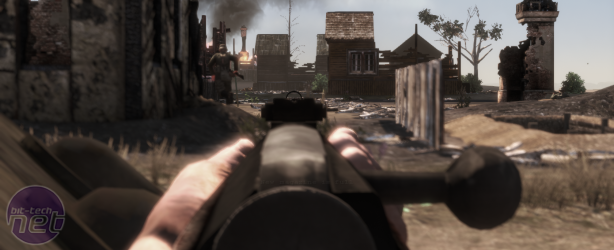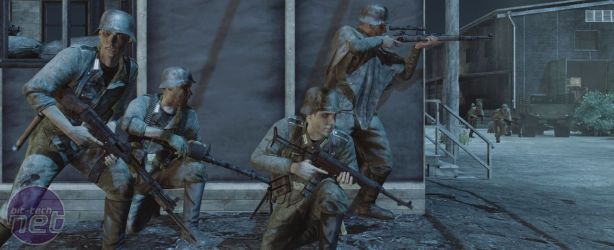Red Orchestra 2: Heroes of Stalingrad Review
October 5, 2011 | 07:41
Companies: #tripwire-interactive

Red Orchestra 2 Review
Other tweaks make for a more tense experience too. You don’t know how many bullets remain in your gun, for example, unless you count them as you fire or check the weight, which will tell you whether you gun is full, more than half full or nearly empty. After a kill there’s also a random amount of delay before you're notified, so you don’t know immediately if your shot hit and killed or just caused an injury.Breaking from cover, then, is terrifying. The most played game mode online is Territory, where one team has a set amount of time to take an objective, which rewards you with a time bonus and more objectives to capture. When all the objectives are taken, the attackers win; the defenders just have to hold them off with counter attacks or retake objective points to further slow the attack.
This means that when a timer is ticking down and success hinges on one decent charge, it’s time to lay down some fire, a smoke grenade if anyone has one, lurch over your cover and run and pray. Like any shooter worth its salt, this is an exhilarating experience: as you hear stray bullets pound around you, your comrade just in front suddenly tumbles to the floor from a shot that could just have easily been for you. This is all made better by the physicality of movement and exquisite sound-work that’s gone in to the game.
Red Orchestra 2 is atmospheric, terrifying, detailed and stunning to look at. It makes you realise the fragility of people in war and if it seems that we’re getting sentimental about this, you only have to read a book such as Antony Beevor’s Stalingrad to have an emotional investment into what’s going on. It’s an excellent alternative to the modern approach of recharging health and everyone’s-a-hero. But, oh dear.
Currently - even writing this two weeks after release and an extended beta period – Red Orchestra 2 is a broken game. Even after several patches there are still significant problems. For example, if you lie down in a certain way next to some walls, you can see through them, and sometimes open windows register as invisible walls. As well as this, the stats tracking system couldn't decide if we were Level 11 or 93. There are performance problems on some Intel processors (Core i7 CPUs, most noticeably) too, resulting in occasional stuttering, even on the main menu. Generally, the game is in a bit of a mess, even if it is one that’s getting slowly fixed.
The singleplayer mode isn’t great either. While we said earlier that the singleplayer mode isn’t the main draw of Red Orchestra 2, it’s still worth commenting on since time spent creating the singleplayer game could have been spent fixing the problems outlined above. The campaign is a trudge through fairly standard WWII missions, each with incredibly dry and overly long introductions, set in the same maps as the multiplayer game. 'Functional' would probably be the best word to describe it, but only if a glitch halfway through the campaign hadn't stopped us progressing to the end.
This leaves us with an interesting dilemma: what score does Red Orchestra 2 deserve?
Tripwire Interactive has a bank of goodwill with its extended support of the original Red Orchestra, Killing Floor and its fevered efforts to fix Red Orchestra 2. However, to release this game in such a poor state is almost offensive. What’s there is great when it works, but the bugs should have been fixed by now. To follow the rules of a review, we can only score the game on its current state, which means it falls way down the all-time rankings. The caveat, though, is that if you give Red Orchestra 2 a little more time and you're willing to overlook the faults, it's likely capable of breaking into the top five games of the year so far.
-
Overall60 / 100


MSI MPG Velox 100R Chassis Review
October 14 2021 | 15:04











Want to comment? Please log in.